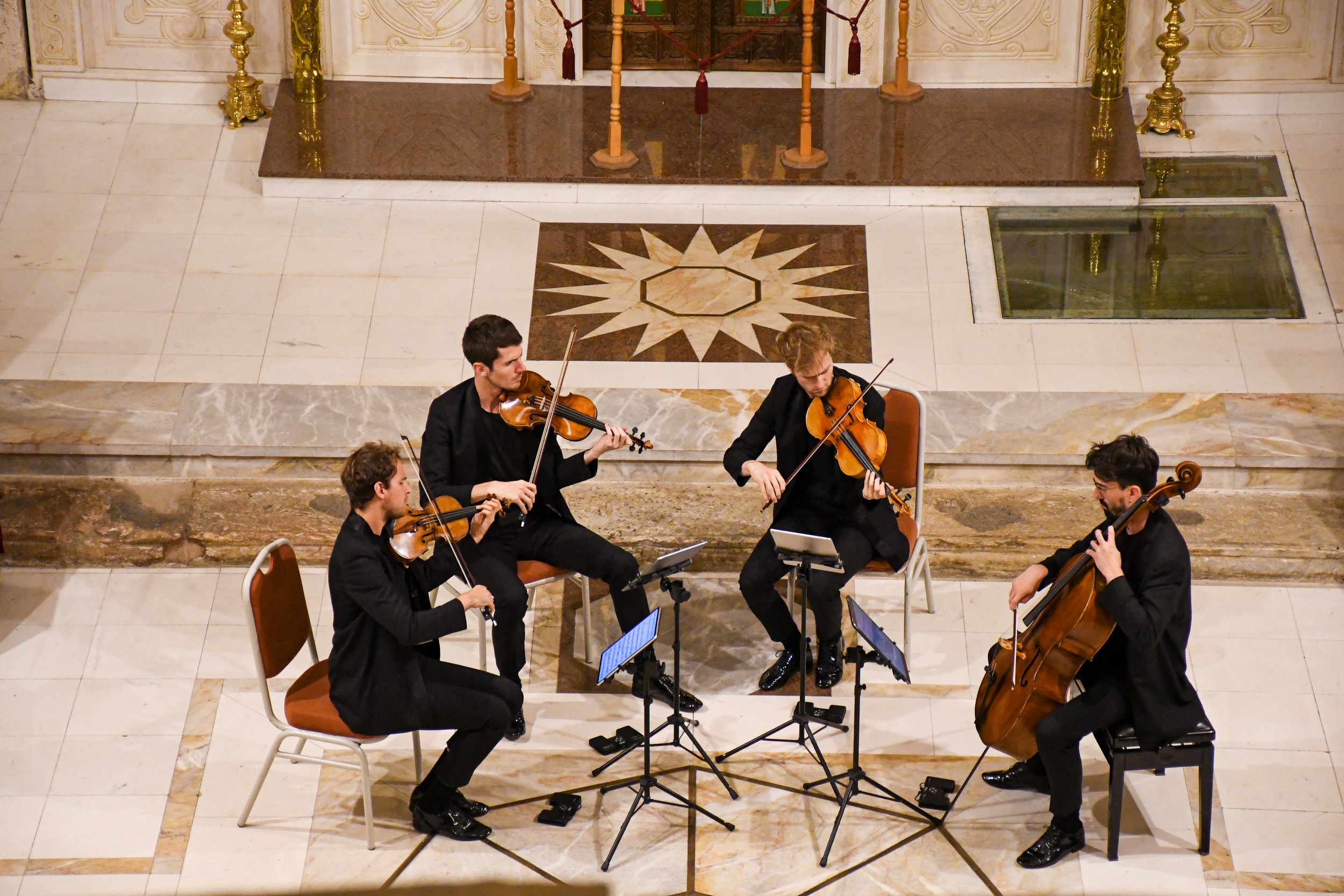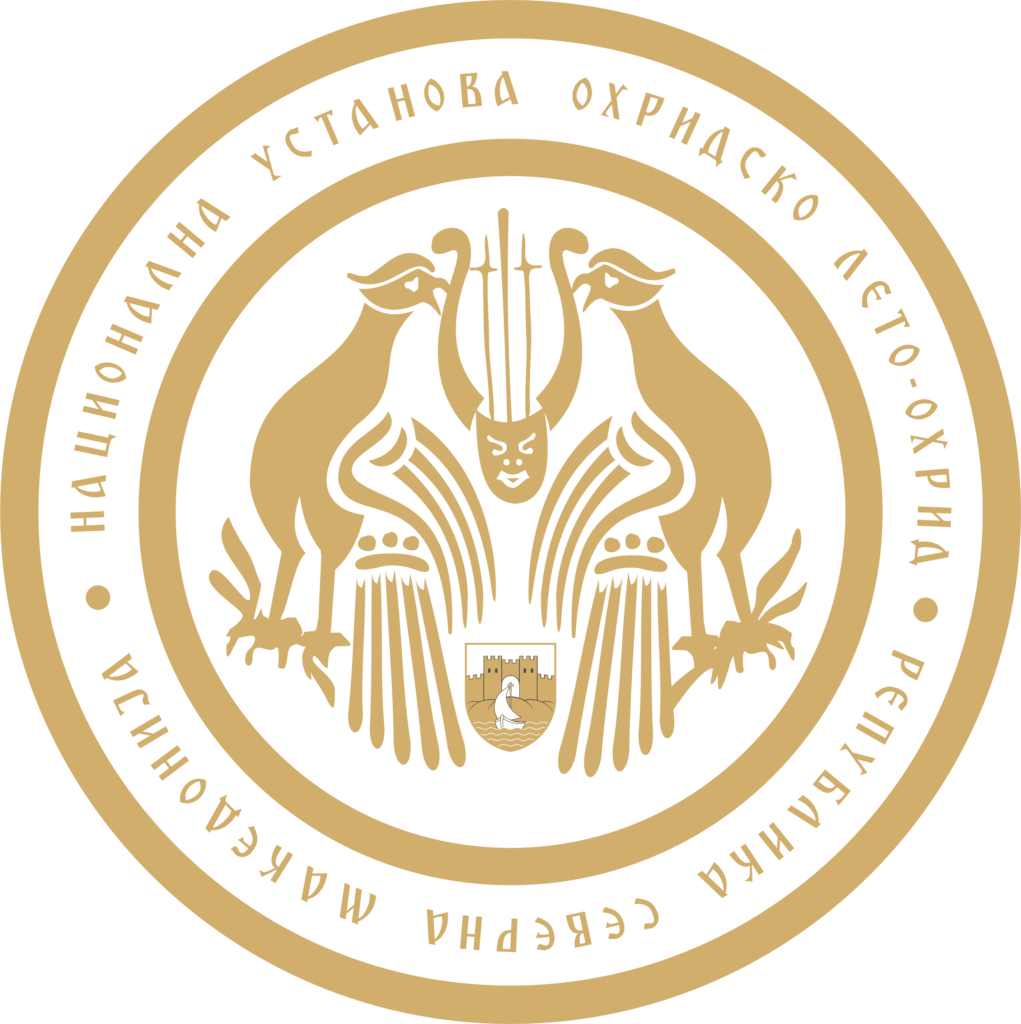
A day after the Italian Evening, in the St Sophia church there was the traditional French evening held at the Ohrid Summer Festival. In the spirit of unity of the two countries, and in continuation to the previous evening, pointing out the connection between the two nations sharing the same latin origins, languages with similar resounds, deep historical connections and interweaving of the two cultures throughout the centuries, the first to speak was the Ambassador of Italy in North Macedonia, Andrea Silvestri. The French Ambassador, Cyrille Bomgartner, on the other hand, who had the initial word the previous evening, in this occasion highlighted that thanks to the beautiful, subtle and complex French-Italian connection, some misunderstandings have been overcome at times and that both countries, Latin cousins, have always known the way of mutual understanding, which can be seen as a good example from many aspects. These two, positive and uniting speeches, were an introduction to a pleasant music evening, which challenge was unison itself. Four, outstandingly talented instrumentalists, all originating from the South of France, the violinists Adrien Jurkovic and Toma Descamps, the violist Raphael Pagnon and the cellist Simone Iachemet, united their individuality in the string quartet “Agate”. This quartet, founded in 2016, with acquired international recognition (by the Young Classical Musicians’s Foundation in London), successfully realized concerts at many European festivals, currently a residential ensemble at the “Singer Polinac” Foundation, presented their brilliance, articulating amazing perfectionalism, in technical, interpretative and artistic sense.
In their concert performance before the audience in Ohrid, the instrumentalists from the “Agate” quartet performed two golden pieces from the music classic repertoire, considered among the topmost achievements in the personal opuses of their creators – String Quartet No.2 op. 20 by Joseph Heidn, and the String quartet No. 13 in B major op.130 with a “Great fugue” op.133 by Ludwig van Beethoven.
The Heidn’s String quartet No.2 op.20 is second in the row of six string quartets op.20, which actually pose a turning point in the history of string quartet, where the author, with a contrapunct elaboration reaches equal participation of all four instruments, thus giving the formal and content trait of the classical quartet style. The cover of the first printed edition shows an illustration of the Sun, and ever since they are known as “Sun” quartets, which in musicology symbolism is interpreted as a sunrise of the string quartets.
Performing maybe the best of the six, the French artists from the beginning of the first movement attracted the attention of the audience with the gentle, well-sounded performance of the cello, which brought the theme with a clear expression in its high register. It was truly impressive to hear the perfect interweaving of the four instruments, from the light colour of the first violin with the dark niche of the cello, to the transparently clear and confident accompaniment of the second violin and the viola, which subtly performed the given bass role. Then in the gloomy and intensive Adagio, with an impeccable unison in the first four times, and then in the tidy performance of the rich texture of passages and figurations, interrupted by dramatic pauses, the quartet “Agate” undoubtedly conquered the sound space. In the uninterrupted consequence of syncoped and chromatically designed Minuet, they subtly contrasted with the Trio, where the cello interpretation of the downward sequence was dominant, making an allusion of dramatism from the second movement. The four musicians reached the culmination in the fourth movement, when they gave a master interpretation to Heidn’s mastership in the construction of the Fugue. They interweaved the four themes in a complex contrapunct with unbelievable easiness, playing in a precise allegro and skilfully held sotto voce, which at the end compatibly turned in a dosed forte, giving a strict expression of the homophonous ending.
In a logical, historic and developmental continuous consequence, after the intermission, the quartet “Agate” brought us to the abundant luxury of Beethoven’s thought. The Quartet No.13 in B major op.130 with “Great fugue” op 133, just as all the quartets written in the late period of his creation, before his death, are actually lyrical philosophic poemas and in a certain sense, a testimony of the events in the personal world of the author. Here, the thought breaks the form and laws, and Beethoven openly exceeds the framework of the classic quartet, nourished and respected for a very long time. The young musicians in their artistic interpretation tried to get to the essence of the creative idea. In the first movement they skilfully moved through the poles of the author, opposing the allegro and adagio, but also uniting and departing from the unisons, in the dense and complex polyphonic textures. In the short, but effectively played presto, we heard amazing arpeggios; in the third movement we received a pleasant, a little mockery scherzo image; while in the fourth, in the manner of a German Dance, the musicians, almost literally danced on their instruments with the fast crescendo-decrescendo sequences, exchanging subtle dialogues through the single-time solos. It was really impressive to be part of the sound image of the Cavatina, in which, at the main theme, in a melancholic mood broung by the violin, the rest three instruments, each with their own impressive line, gave it a compact accompaniment. At the end, finishing up the concert, the French artists expressed their whole musicality, technical preparedness and interpretative mastership in the Great fugue. Energetically, yet subtly fiercely, they played all the composer’s challenges of Beethoven, creating an effective, impressive finish.
The conclusion of this concert is that we had the opportunity to hear an amazing perfectionism, in which the young musicians showed the complexity of their musical thought, leaving us fascinated by their compactness, mutual support, sense of collectiveness and simply, with all the characteristics needed for a chamber ensemble.
Aleksandar Trajkovski

